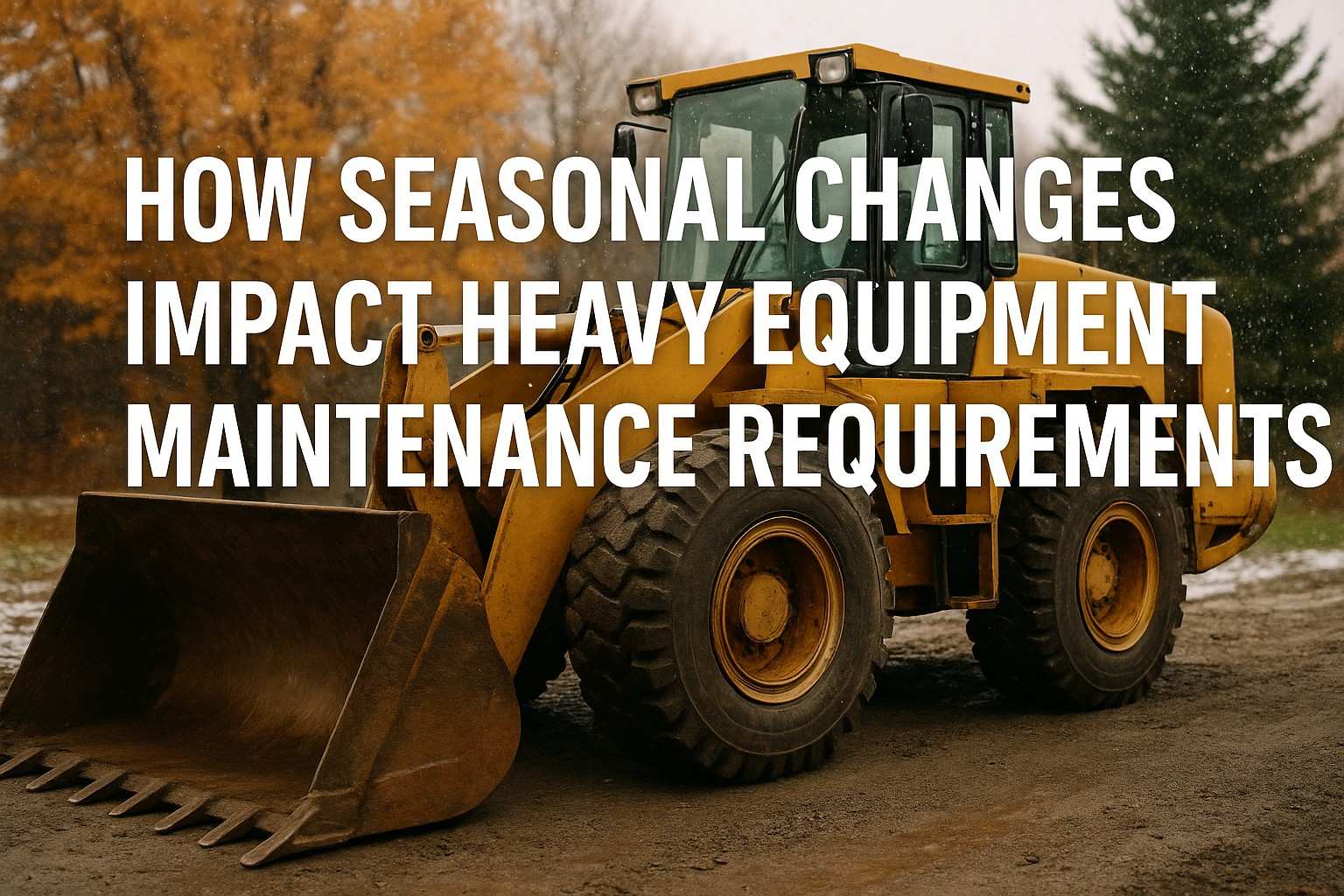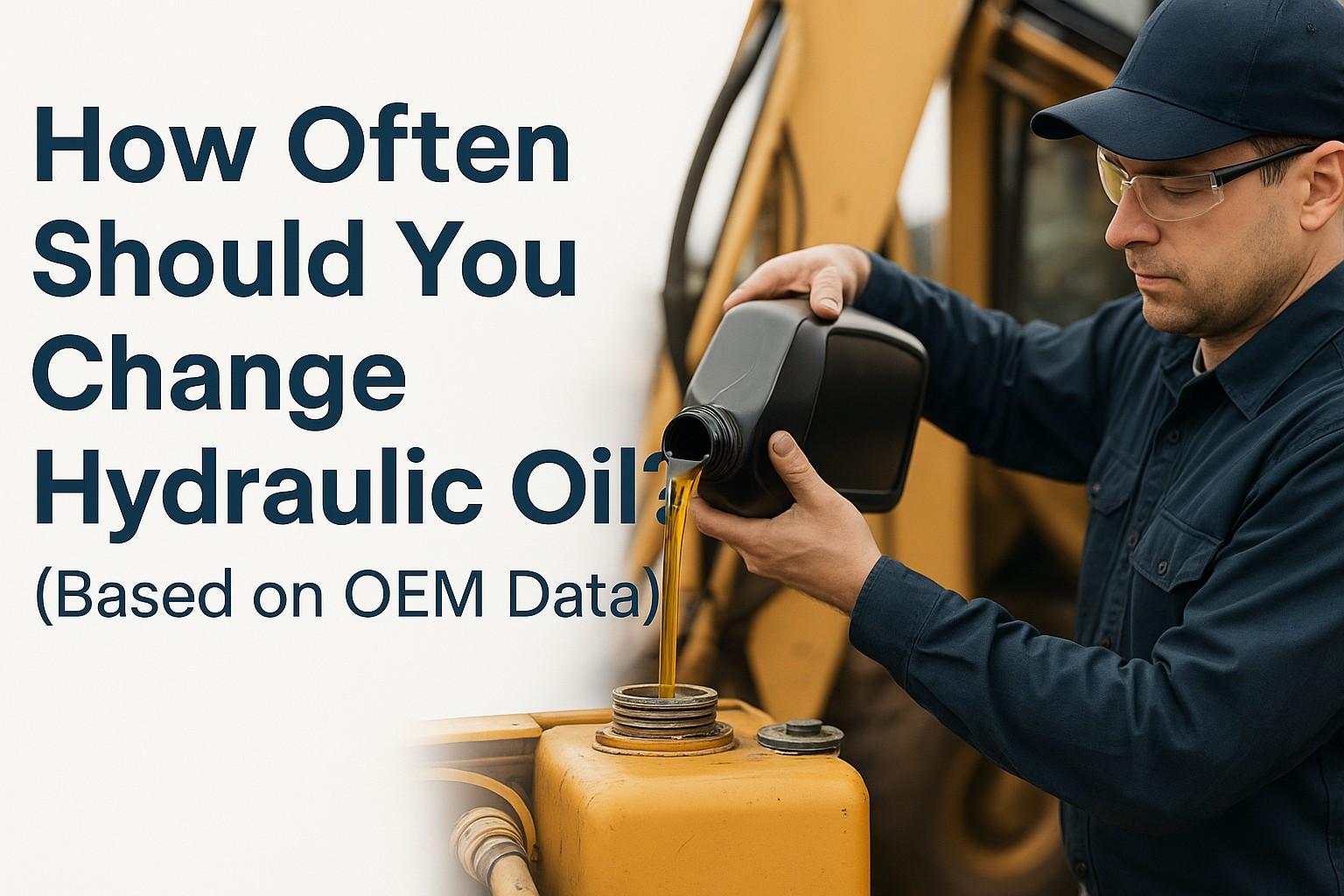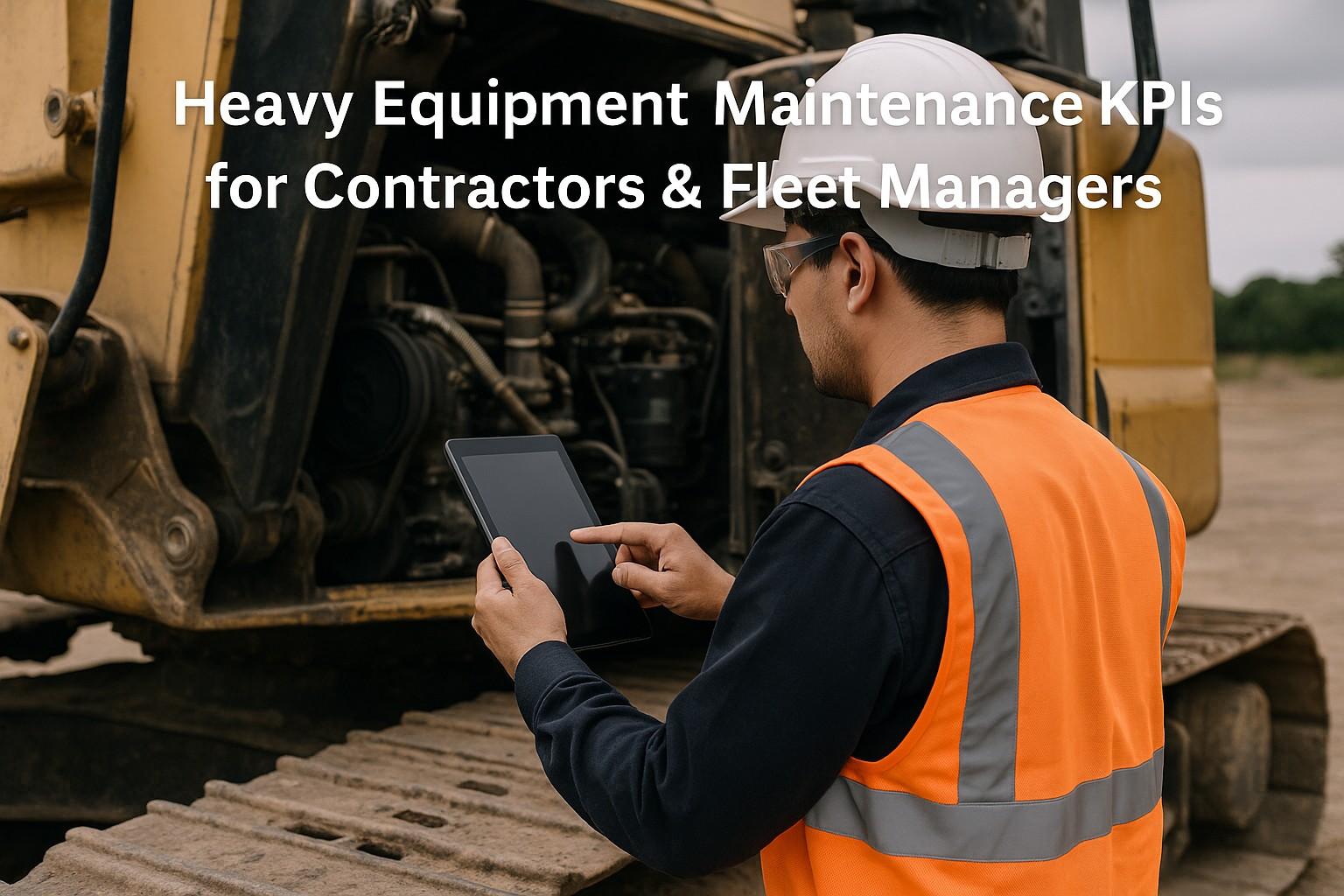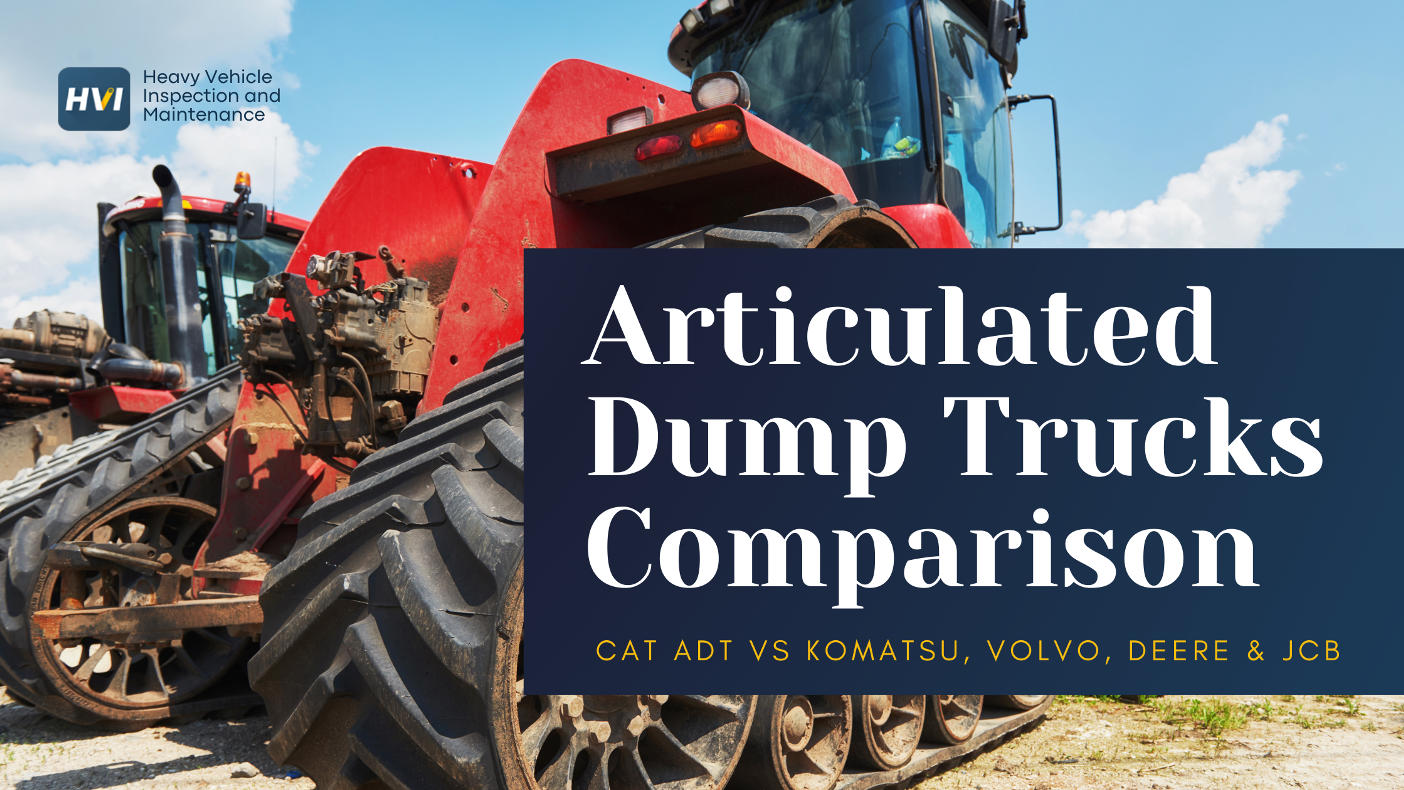Winter weather destroys unprepared heavy equipment fleets, with cold-weather failures costing US construction companies an average of $125,000 per machine annually during freezing months. With temperatures dropping below 32°F across 75% of American construction markets for 3-6 months yearly, fleet winterization isn't optional—it's essential protection against catastrophic equipment damage, project delays, and emergency repair costs that can devastate operational budgets and competitive positioning.
This comprehensive fleet winterization strategy prevents 88% of cold-weather equipment failures, reduces winter maintenance costs by 65%, and ensures 95%+ equipment availability during freezing conditions. More importantly, it transforms vulnerable equipment into reliable winter assets that maintain productivity while competitors struggle with frozen machinery and emergency repairs costing $45,000-125,000 per incident.
Winter Equipment Performance Impact
Ready to Protect Your Fleet from Winter Damage?
Discover proven winterization protocols that ensure reliable equipment performance through the harshest conditions.
The Ultimate Fleet Winterization Protocol Framework
Effective fleet winterization requires systematic preparation addressing the five critical cold-weather failure modes: engine block freezing, hydraulic fluid crystallization, battery power degradation, fuel system gelling, and lubrication breakdown. These failures occur when temperatures drop below specific thresholds, with engine damage beginning at 25°F, hydraulic problems starting at 15°F, and complete system failures common below 0°F without proper winterization protocols.
Regional Winter Challenges and Adaptation Strategies
US construction markets face diverse winter conditions requiring customized winterization approaches. Northern regions experience sustained sub-zero temperatures demanding comprehensive freeze protection, while southern markets face intermittent freezing requiring flexible preparation strategies. Understanding regional differences enables optimized winterization investments and protection protocols.
Each climate zone presents unique challenges that affect winterization timing, intensity, and duration. Mountain regions require altitude-adjusted protocols, coastal areas need humidity management, and desert regions face extreme temperature swings requiring specialized protection strategies.
- ✓ Northern States (Alaska, Minnesota, North Dakota): Comprehensive protection with engine block heaters, arctic-grade fluids, and permanent winterization systems
- ✓ Great Lakes Region: Extended winter preparation with humidity management, road salt protection, and ice formation prevention
- ✓ Mountain States (Colorado, Montana, Utah): Altitude-adjusted protocols with pressure compensation and extreme temperature protection
- ✓ Transitional Zones (Missouri, Tennessee, Virginia): Flexible winterization with rapid deployment capabilities for unexpected cold snaps
- ✓ Southern States (Texas, Florida, Arizona): Light winterization focusing on overnight protection and equipment storage protocols
- ✓ Coastal Regions: Corrosion prevention emphasis with moisture control and salt-air protection systems
Essential Winterization Equipment and Technology
Modern fleet winterization integrates traditional protection methods with advanced technologies that provide automated monitoring, predictive alerts, and remote management capabilities. Smart winterization systems achieve 95% protection effectiveness while reducing manual intervention by 70% through sensor networks and automated response protocols.
Investment in winterization technology provides year-round benefits through equipment condition monitoring, energy management, and predictive maintenance capabilities that extend beyond cold-weather protection to enhance overall fleet management and operational efficiency.
- ✓ Engine Block Heater Systems with programmable timers, temperature sensors, and remote activation capabilities ($800-2,500 per unit)
- ✓ Hydraulic Tank Heaters with thermostat control and low-voltage protection systems ($600-1,800 per machine)
- ✓ Battery Warming Systems with trickle charging and thermal management ($400-1,200 per machine)
- ✓ Fuel Anti-Gel Systems with automatic additive injection and temperature monitoring ($1,200-3,500 per unit)
- ✓ Environmental Enclosures providing complete weather protection with heating and ventilation ($5,000-15,000 per bay)
- ✓ IoT Monitoring Networks tracking temperature, humidity, and system status with mobile alerts ($2,000-5,000 per fleet)
Implementation Timeline and Cost Analysis
Successful fleet winterization requires strategic timing that balances preparation costs with protection effectiveness. Early implementation provides cost advantages through bulk purchasing and scheduled installation, while late preparation results in premium pricing and rushed installation that reduces effectiveness and increases failure risks.
Total winterization investment typically ranges from $3,000-12,000 per machine depending on climate severity and protection level required. However, protection value exceeds investment by 8-15x through prevented damage, maintained productivity, and reduced emergency repair costs during winter months.
- ✓ Equipment assessment and winterization planning with $2,000-4,000 evaluation investment
- ✓ Heating system installation and testing with $8,000-15,000 per machine investment
- ✓ Fluid analysis and replacement with arctic-grade specifications
- ✓ Electrical system optimization and battery preparation protocols
- ✓ Storage facility preparation and environmental control system setup
- ✓ Staff training on winter operation procedures and emergency protocols
- ✓ System verification and performance testing with full operational simulation
- ✓ Emergency equipment deployment including portable heaters and jump-start systems
- ✓ Monitoring system activation with alert threshold configuration
- ✓ Fuel additive programs and contamination prevention protocols
- ✓ Documentation completion and compliance verification for warranty protection
- ✓ Contingency planning and emergency response procedure finalization
Critical Winter Maintenance Procedures
Winter equipment operation requires modified maintenance procedures that address cold-weather stresses and prevent progressive damage from freeze-thaw cycles. These procedures ensure continued protection effectiveness while maintaining equipment performance through extended cold exposure and challenging operational conditions.
Daily winter maintenance takes 15-25% longer than standard procedures but prevents 90% of cold-weather failures through systematic monitoring and proactive intervention. Investment in proper winter procedures pays immediate dividends through maintained productivity and eliminated emergency repairs.
- ✓ Pre-operation warm-up procedures with gradual system activation and temperature monitoring
- ✓ Fluid level verification and leak detection focusing on freeze-vulnerable systems
- ✓ Battery voltage testing and charging system performance verification
- ✓ Fuel quality assessment and anti-gel additive concentration checking
- ✓ Ice formation inspection on air intakes, cooling systems, and hydraulic components
- ✓ End-of-shift shutdown procedures with protection system activation and storage preparation
- ✓ Coolant concentration testing and antifreeze effectiveness verification
- ✓ Hydraulic fluid viscosity assessment and low-temperature performance evaluation
- ✓ Heating system performance testing and energy consumption optimization
- ✓ Electrical connection inspection and corrosion prevention maintenance
- ✓ Fuel system water contamination testing and separator drain procedures
- ✓ Environmental enclosure integrity verification and heating efficiency assessment
Emergency Winter Response Protocols
Despite comprehensive winterization, emergency situations require rapid response capabilities that minimize damage and restore operations quickly. Effective emergency protocols reduce average response time from 4-8 hours to 45-90 minutes while preventing secondary damage that can double repair costs.
Emergency preparedness includes equipment stockpiling, technician training, and vendor partnerships that ensure immediate support availability during critical failures. Investment in emergency capabilities pays substantial returns through maintained productivity and reduced crisis management costs.
- ✓ Portable heating systems with diesel or electric power options ($2,500-6,000 per unit)
- ✓ Emergency power supplies and jump-start systems for battery failures ($1,800-4,500 per kit)
- ✓ Thawing equipment including heat guns, warming blankets, and circulation pumps ($800-2,200 per set)
- ✓ Emergency fluid supplies including arctic-grade hydraulic oil and antifreeze concentrates
- ✓ Diagnostic equipment for rapid problem identification and damage assessment
- ✓ Communication systems ensuring coordination between field teams and support personnel
Measuring Winter Protection Success
Effective winterization requires continuous monitoring and performance measurement that validates protection effectiveness and identifies optimization opportunities. Success metrics enable data-driven improvements and demonstrate return on winterization investment through quantifiable operational benefits.
Performance tracking extends beyond simple failure rates to encompass productivity maintenance, cost avoidance, and comparative analysis that reveals the true value of comprehensive winter protection programs compared to reactive emergency management approaches.
- ✓ Equipment availability rates targeting 95%+ uptime during freezing conditions
- ✓ Cold-weather failure prevention achieving 85-90% reduction compared to unprotected equipment
- ✓ Emergency repair cost avoidance measuring $45,000-125,000 prevention per machine annually
- ✓ Energy efficiency optimization reducing heating costs by 35-50% through smart management
- ✓ Productivity maintenance ensuring 90%+ performance compared to warm-weather operations
- ✓ Start-up reliability achieving 98%+ successful cold-start rates in extreme conditions
Post-Winter Equipment Recovery and Assessment
Spring transition requires systematic equipment assessment and recovery procedures that identify winter-related wear, optimize performance for warm-weather operations, and prepare for next winter's challenges. Post-winter maintenance prevents 70% of spring failures while extending equipment life through comprehensive system restoration.
Recovery procedures include fluid analysis, system performance testing, and component inspection that reveals winter operation impacts and guides preventive maintenance planning. Investment in thorough post-winter care pays substantial dividends through improved reliability and reduced summer maintenance costs.
Maximizing ROI Through Strategic Winter Protection
Fleet winterization represents a critical investment in equipment protection and operational continuity that delivers measurable returns through damage prevention, productivity maintenance, and competitive advantage during challenging winter conditions. The financial benefits extend beyond immediate cost savings to encompass enhanced equipment longevity and market positioning.
US contractors who implement comprehensive winterization protocols achieve measurable improvements in winter equipment reliability, operational efficiency, and profitability. Conservative estimates suggest total ROI exceeding 800% through prevented failures, maintained productivity, and reduced emergency costs over a 5-year period.
The construction industry's year-round demands require proactive winter preparation that protects valuable equipment investments while maintaining competitive capabilities. Fleet operators who prioritize winterization today will be best positioned to capitalize on winter opportunities while avoiding the devastating costs of cold-weather equipment failures.
Protect Your Fleet Investment This Winter
Start implementing proven winterization strategies and ensure reliable equipment performance through the coldest conditions.
Book a Demo
.png)



